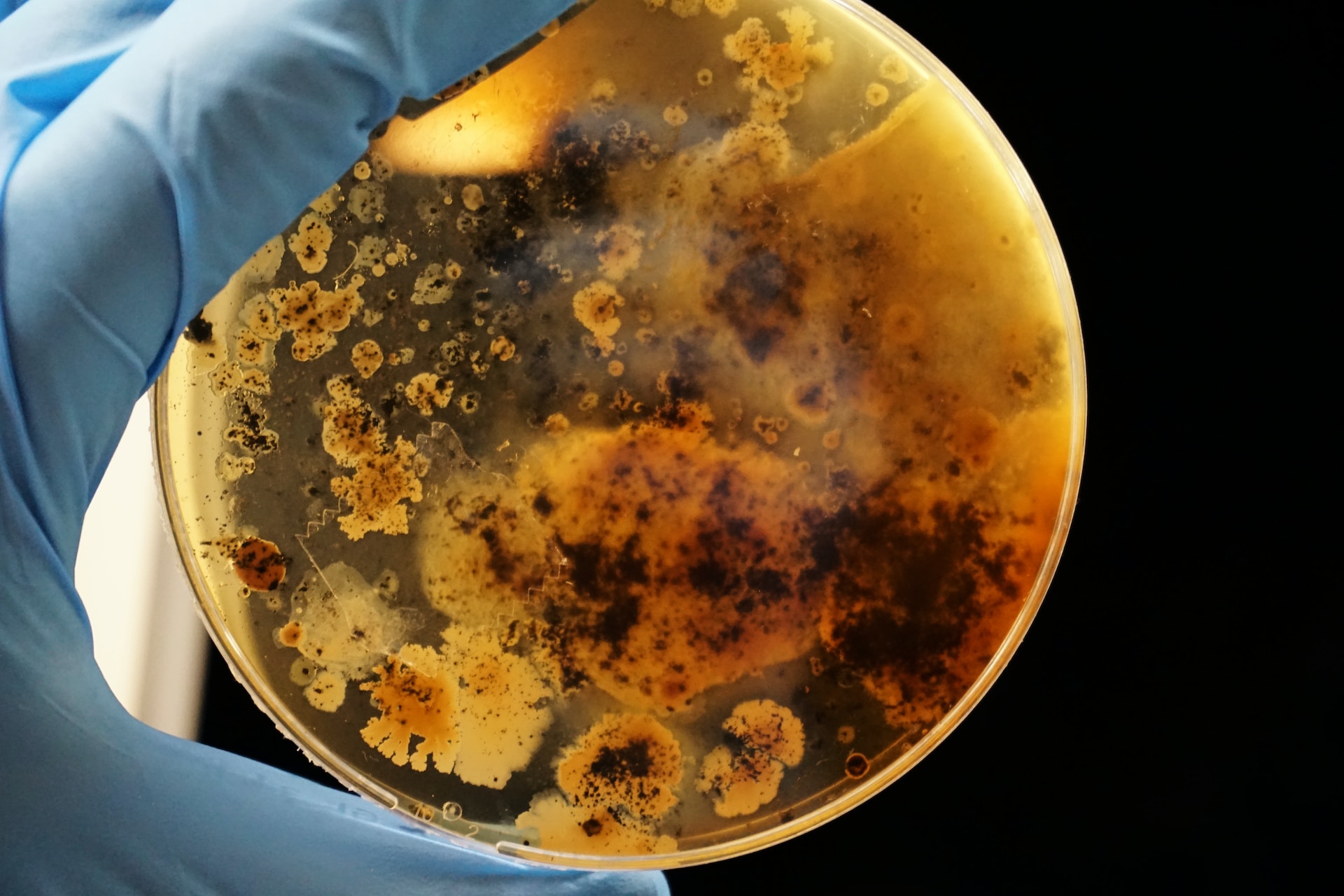Escherichia coli, or E. coli for short, is a type of bacteria that lives in the gut of animals and humans. Most E. coli strains are harmless or even helpful, but some can make you very sick. In this article, you will learn:
- What is E. coli and how does it look like
- How diverse E. coli is and how it causes disease
- How E. coli evolves and acquires new traits
- What are the latest news and research on E. coli
What is E. coli?
- coli is a tiny, rod-shaped bacterium that can move using long, whip-like structures called flagella. It can survive with or without oxygen, and it can grow in different temperatures and acidity levels. E. coli has a single circular chromosome that contains about 4,400 genes, and several plasmids that contain extra genes. Plasmids can be transferred between different E. coli strains and give them new abilities, such as antibiotic resistance or virulence factors.
How diverse is E. coli?
- coli is a very diverse and adaptable bacterium that can be classified into different groups based on various criteria, such as:
- Serotype: This is based on the antigens (molecules that trigger an immune response) on the surface of E. coli cells. There are more than 700 serotypes of E. coli, such as O157:H7, which can cause severe bloody diarrhea and kidney failure.
- Phylogroup: This is based on the genetic similarity of E. coli strains. There are seven major phylogroups of E. coli, such as A and B1, which are mostly harmless, and B2 and D, which are mostly harmful and can cause infections outside the gut.
- Pathotype: This is based on the presence of specific virulence factors that enable E. coli to cause disease. There are several pathotypes of E. coli, such as:
- STEC: These are E. coli strains that produce Shiga toxins, which are powerful toxins that damage the intestine and the blood vessels. They can cause bloody diarrhea, hemolytic uremic syndrome (HUS), and thrombotic thrombocytopenic purpura (TTP).
- ETEC: These are E. coli strains that produce enterotoxins, which are toxins that stimulate the secretion of fluids and electrolytes in the intestine. They can cause watery diarrhea, dehydration, and electrolyte imbalance. They are a major cause of traveler’s diarrhea and infant diarrhea in developing countries.
- EPEC: These are E. coli strains that adhere to the intestinal cells and cause them to lose their microvilli, which are finger-like projections that increase the surface area for absorption. They can cause watery diarrhea, vomiting, and fever. They are a common cause of infant diarrhea in developing countries.
- EHEC: These are E. coli strains that combine the features of STEC and EPEC. They produce Shiga toxins and adhere to the intestinal cells, causing bloody diarrhea and HUS. They include E. coli O157:H7 and some other serotypes.
- EAEC: These are E. coli strains that form aggregates (clumps) on the intestinal cells and produce a biofilm, which is a slimy layer of bacteria and extracellular substances. They can cause persistent diarrhea, malnutrition, and growth retardation. They are a common cause of diarrhea in children and adults in developing countries.
- EIEC: These are E. coli strains that invade the intestinal cells and cause them to die. They can cause dysentery, which is a severe form of diarrhea with blood and mucus in the stool. They are similar to Shigella, which is another type of bacteria that causes dysentery.
- DAEC: These are E. coli strains that adhere diffusely (uniformly) to the intestinal cells and produce a cytotoxin, which is a toxin that damages the cells. They can cause diarrhea, especially in children and immunocompromised individuals.
The table below summarizes the main features and effects of the different E. coli pathotypes:
| Pathotype | Virulence factor | Effect |
|---|---|---|
| STEC | Shiga toxin | Bloody diarrhea, HUS, TTP |
| ETEC | Enterotoxin | Watery diarrhea, dehydration, electrolyte imbalance |
| EPEC | Adherence factor | Watery diarrhea, vomiting, fever |
| EHEC | Shiga toxin + Adherence factor | Bloody diarrhea, HUS |
| EAEC | Aggregative factor + Biofilm | Persistent diarrhea, malnutrition, growth retardation |
| EIEC | Invasion factor | Dysentery |
| DAEC | Diffuse adherence factor + Cytotoxin | Diarrhea |
How does E. coli evolve?
- coli is a highly adaptable and versatile bacterium that can evolve rapidly in response to changing environments and selective pressures. E. coli can acquire new genes and traits through various mechanisms, such as:
- Mutation: This is a change in the DNA sequence of a gene that can alter its function or expression. Mutation can occur spontaneously or be induced by external factors, such as UV light, chemicals, or radiation. Mutation can result in beneficial, neutral, or harmful effects on the fitness of E. coli.
- Horizontal gene transfer: This is the transfer of DNA from one bacterium to another through different methods, such as:
- Transformation: This is the uptake of free DNA from the environment by E. coli cells. The DNA can come from dead or lysed (broken) bacteria or from plasmids that have been released into the surroundings. The DNA can be integrated into the chromosome or maintained as a plasmid.
- Transduction: This is the transfer of DNA from one bacterium to another by a bacteriophage, which is a virus that infects bacteria. The bacteriophage can accidentally incorporate bacterial DNA into its genome during the infection process and then inject it into another bacterium during the next infection cycle. The DNA can be integrated into the chromosome or maintained as a plasmid.
- Conjugation: This is the transfer of DNA from one bacterium to another through direct cell-to-cell contact. The donor bacterium has a plasmid that contains a set of genes called the F factor, which enables it to form a pilus, which is a thin, hair-like structure that connects to the recipient bacterium. The plasmid can then be transferred from the donor to the recipient through the pilus. The plasmid can also carry other genes, such as antibiotic resistance or virulence factors, that can be transferred along with the F factor.
Horizontal gene transfer can enable E. coli to acquire new traits and increase its genetic diversity and adaptability. For example, E. coli can acquire antibiotic-resistance genes from other bacteria through horizontal gene transfer and become resistant to multiple antibiotics. E. coli can also acquire virulence factors from other bacteria or phages through horizontal gene transfer and become more pathogenic.
The latest news and research on E. coli?
- coli is a widely studied bacterium that is of great interest to scientists and the public. Here are some of the latest news and research on E. coli as of November 24, 2023:
- Bacteria found storing, and transmitting memories across generations for the first time: Researchers from the University of Texas and the University of Delaware have uncovered a potential memory system in E. coli. They found that E. coli can store information about their past environment, such as the presence of antibiotics, and pass it on to their offspring through a process called epigenetic inheritance. This can help E. coli adapt to changing conditions and survive stress. The researchers also identified a protein called H-NS that acts as a molecular switch to turn on or off the memory system. This discovery could have implications for understanding how bacteria evolve and respond to antibiotics.
- Bacteria Can Store Memories and Pass Them on For Generations: A similar study by researchers from the University of California, San Diego, has also revealed that E. coli can store and transmit memories across generations. They found that E. coli can remember the level of oxygen they were exposed to in the past and adjust their metabolism accordingly. They also found that E. coli can inherit this memory from their parents and grandparents and that this memory can last for at least 12 generations. The researchers identified a protein called ArcA that acts as a memory keeper and regulator. This study could show how bacteria adapt to different environments and cope with stress.
- Study shows how AI can help identify and treat E. coli infections: Researchers from the University of Waterloo and the University of Alberta have developed an AI system that can diagnose and treat E. coli infections in humans and animals. The system uses deep learning to analyze genomic data and clinical symptoms of E. coli strains and determine their pathotype, serotype, antibiotic resistance, and virulence factors. The system can also suggest the best treatment options based on the patient’s condition and the E. coli characteristics. The system can help doctors and veterinarians to quickly and accurately diagnose and treat E. coli infections and prevent their spread.
- Scientists create E. coli that can eat plastic: Researchers from the University of Edinburgh and the University of Toulouse have engineered E. coli that can break down and consume polyethylene terephthalate (PET), which is a common type of plastic used in bottles, containers, and fabrics. They modified the E. coli genome to introduce genes from two other bacteria that can degrade PET. They also optimized the E. coli metabolism to use PET as a carbon and energy source. The engineered E. coli can degrade PET up to six times faster than the natural bacteria and produce fewer toxic byproducts. The researchers hope that their work can pave the way for developing biodegradable plastics and bioremediation of plastic pollution.
Conclusion:
You have just read an article about Escherichia coli, a bacterium with many faces. You have learned about its structure, function, diversity, and evolution. You have also learned about its role in health and disease, and how it can be beneficial or harmful. You have also learned about some of the latest discoveries and innovations involving E. coli, such as its memory system, its diagnostic and therapeutic potential, and its ability to degrade plastic. Escherichia coli is a remarkable and versatile bacterium that deserves your attention and appreciation.





